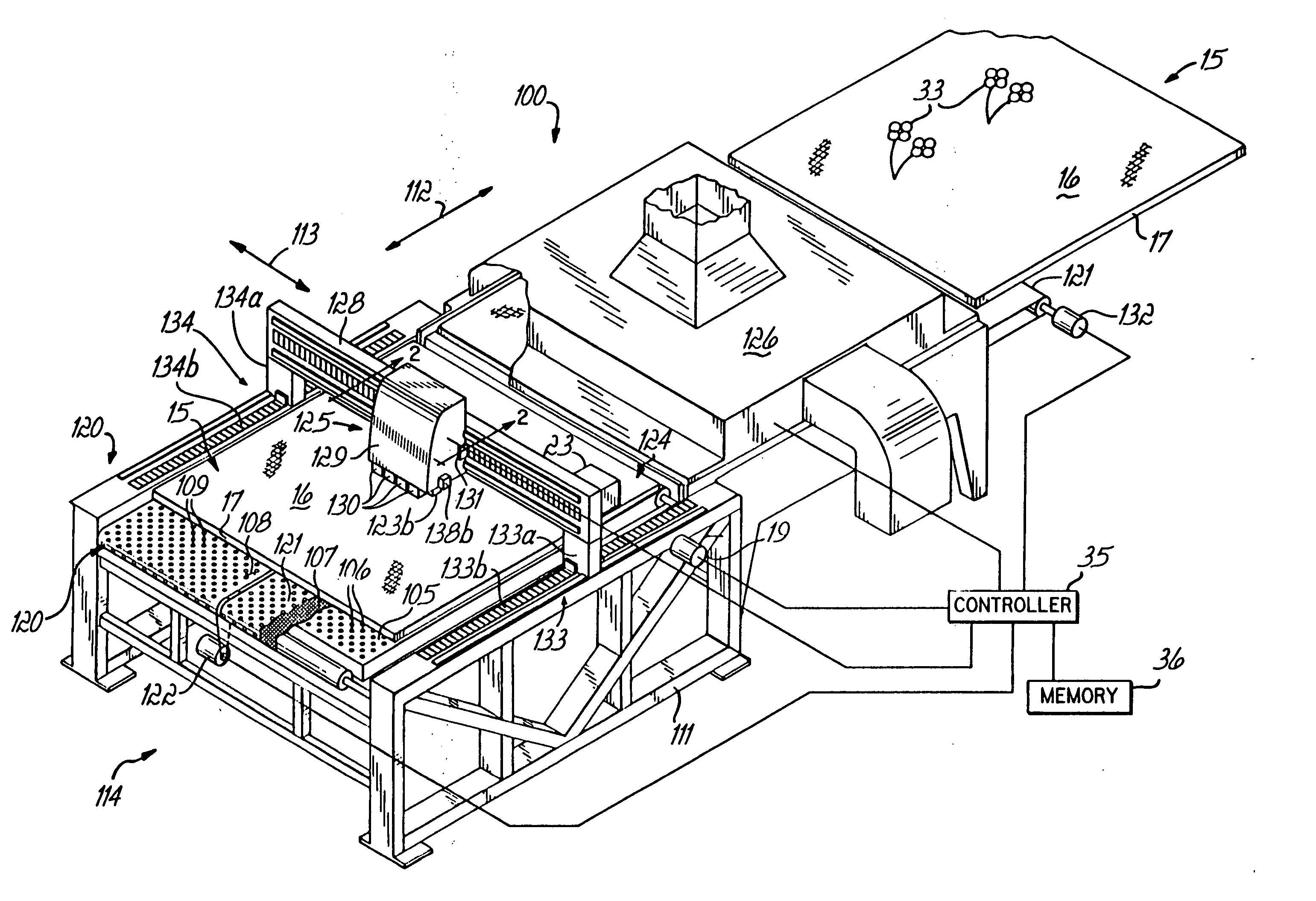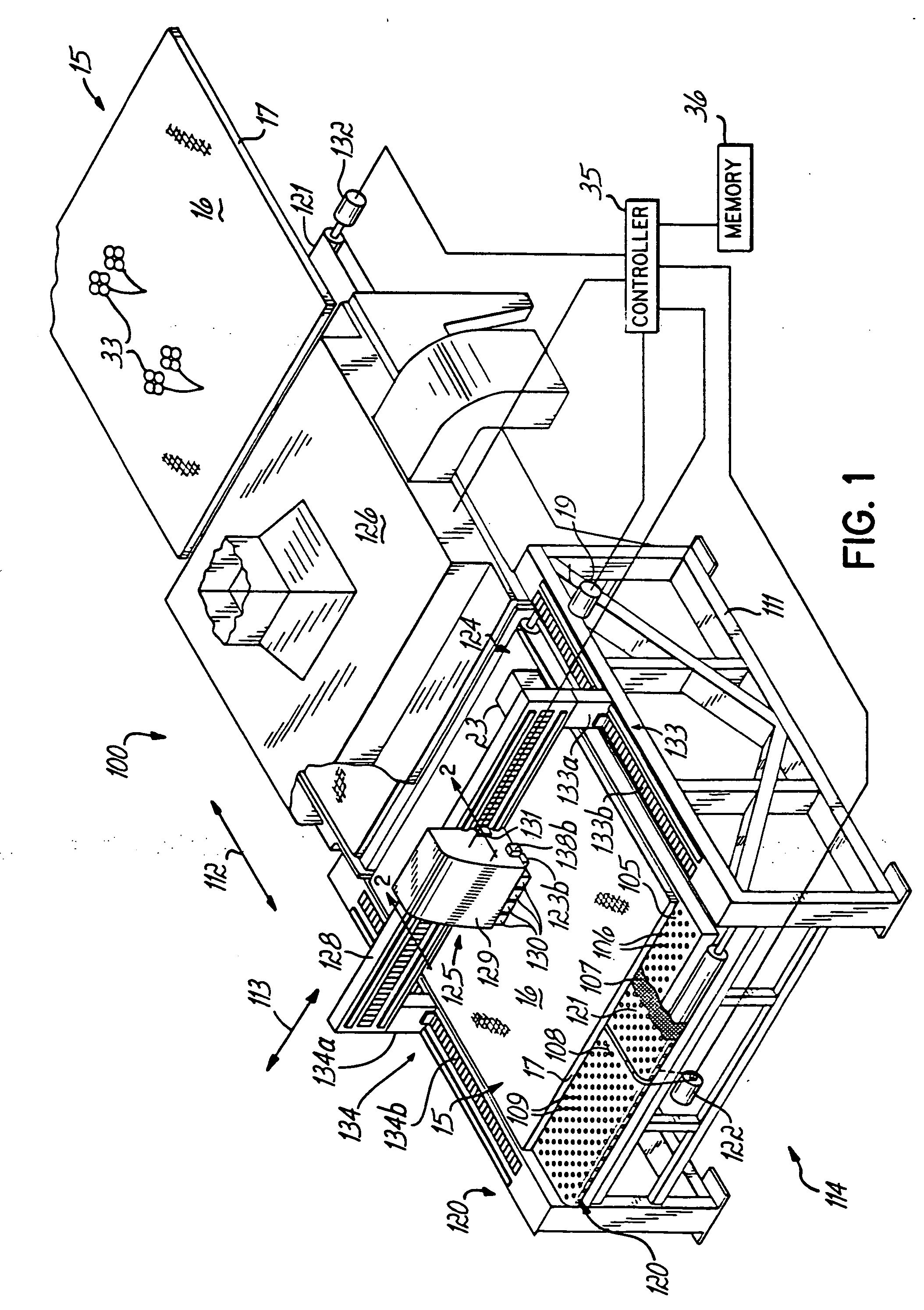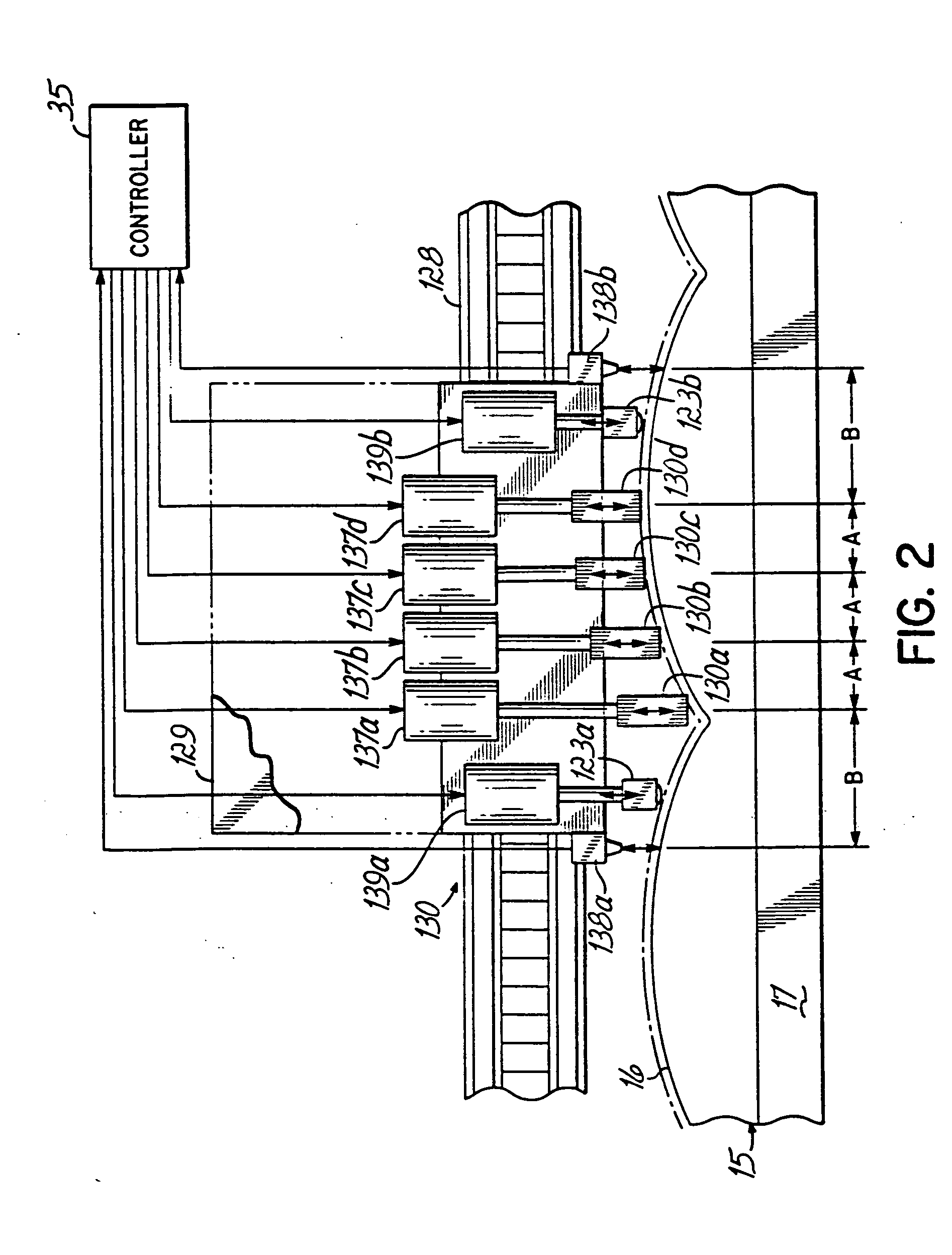Method and apparatus for ink jet printing on rigid panels
- Summary
- Abstract
- Description
- Claims
- Application Information
AI Technical Summary
Benefits of technology
Problems solved by technology
Method used
Image
Examples
Embodiment Construction
[0023] Ink jet printing onto large rigid substrates is described in the commonly assigned and copending U.S. patent applications Ser. Nos. 09 / 650,596, filed Aug. 30, 2000, and 09 / 822,795, filed Mar. 30, 2001, hereby expressly incorporated by reference herein. Ink jet printing onto large substrates, particularly textiles, is described in the commonly assigned and copending U.S. patent applications Ser. No. 09 / 390,571, filed Sep. 3, 1999, Ser. No. 09 / 823,268, filed Mar. 30, 2001 and Ser. No. 09 / 824,517, filed Apr. 2, 2001, and International Application Serial No. PCT / US00 / 24226, filed Sep. 1, 2000, each hereby expressly incorporated by reference herein.
[0024]FIG. 1 illustrates an ink jet printing machine 100 for printing onto wide rigid substrates. The machine 100 includes a stationary frame 111 with a longitudinal extent represented by an arrow 112 and a transverse extent represented by an arrow 113. The machine 100 has a front end 114 into which the rigid panel 15 may be loaded ont...
PUM
| Property | Measurement | Unit |
|---|---|---|
| Length | aaaaa | aaaaa |
| Distance | aaaaa | aaaaa |
| Wavelength | aaaaa | aaaaa |
Abstract
Description
Claims
Application Information
 Login to View More
Login to View More - R&D
- Intellectual Property
- Life Sciences
- Materials
- Tech Scout
- Unparalleled Data Quality
- Higher Quality Content
- 60% Fewer Hallucinations
Browse by: Latest US Patents, China's latest patents, Technical Efficacy Thesaurus, Application Domain, Technology Topic, Popular Technical Reports.
© 2025 PatSnap. All rights reserved.Legal|Privacy policy|Modern Slavery Act Transparency Statement|Sitemap|About US| Contact US: help@patsnap.com



